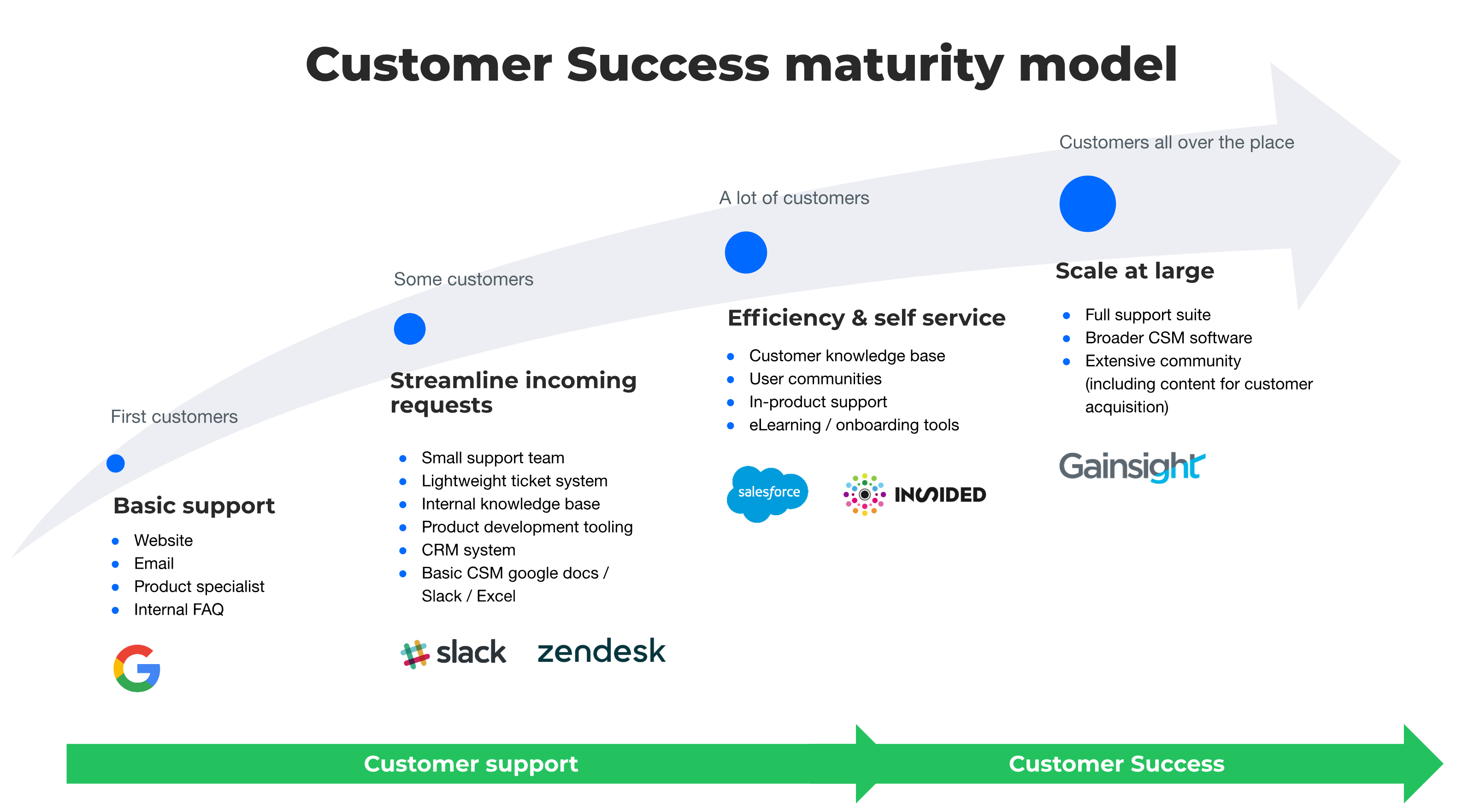Here at inSided it’s no secret that we work with B2B software companies to create more efficiency and quality for their Customer Success teams. One thing we’ve learnt is that there is a clear sliding scale when it comes to Customer Success team maturity: in terms of operations, ways of working and particularly tooling.
Over the course of the past few months, inSided has been working on developing our Customer Success Maturity Model—which we’ve featured at events such as Gainsight’s Pulse, Customer Success meet-ups, in our own Ultimate Guide to Customer Success, and which has been picked up and featured in Forrester’s latest self-service report (a link to get your exclusive download will follow as soon as it’s published).
Without further ado, let’s take you guys through the maturity model so that you as a Customer Success leader or manager can start to see where your organization fits in this model—and how to tool up for growth and scaling accordingly.

inSided’s Customer Success Maturity Model
B2B software organizations go through different phases of growth, and you’ll see your customer support and success functions going through different ‘growing pains’ accordingly. You can listen to a detailed explanation of the Maturity Model our Head of Marketing, Remco, did for the Practical CSM podcast here:
So, let’s take a walk through the maturity model.
Phase 1: Basic support
‘First customers’ stage. Your organization is still small enough that having your website, some basic email support and perhaps a Product Specialist provides the coverage you need for support enquiries. You’ve got internal documentation that your small team can use between yourselves to handle any incoming questions, and the product team is readily available for troubleshooting. At this stage, you’re unlikely to have a conscious Customer Success focus as your client roster is still small enough that every customer receives highly personal attention.
Phase 2: Streamline incoming requests
‘Some customers’ phase. Your customer list is growing — yes! But this brings more support enquiries, and you’re starting to need to put an efficient process in place. Your team has probably grown, with dedicated customer support reps or agents, and it’s time to put a lightweight ticketing system in place, like Zendesk to manage that uplift in incoming questions and enquiries. From an internal workflow perspective, you’ve probably developed a system for some kind of internal knowledge base that your support team can draw on when needed, and you’ll now be using or implementing a CRM system — maybe Salesforce — to manage that ever-growing customer list.
Phase 3: Efficiency and self-service
‘A lot of customers’ phase. Growth is happening and it may be moving at a speed you’re struggling to keep up with, internally. Your key focus now is on moving from 1-to-1 support to 1-to-many support, in order to keep up. It’s time to find a way to maintain your support team’s efficiency, continue to provide high quality support, start taking a proactive approach to Customer Success — and save everybody’s sanity in the process. You’re taking a more methodical and proactive approach to Customer Success now, with dedicated CSMs as well as the support team. The efficiency and self-service phase is where inSided offers the perfect future-proof solution: with a customer knowledge base that offers 1-to-many self-service support — supporting by user-generated content — in-product support, and proactive customer success tools such as onboarding.
Phase 4: Scale at large
‘Customers all over the place’ phase. By now, you’ll be making use of a comprehensive CRM system, have multiple streamlined processes in place and your community and self-service knowledge base will be fully embedded. The majority of support enquiries are handled by users themselves via self-service, leaving your support team to focus on the important requests and Customer Success managers to work proactively with customers to amplify the impact of your product on their own business. At this stage, you may be using or about to implement a more comprehensive Customer Success tool such as Gainsight.
So that’s our round-up. Do you recognize your own organization on this model? At which stage do you fit, and is your team, process and tech stack up to the job? We would love to hear form you—feel free to get in touch!



